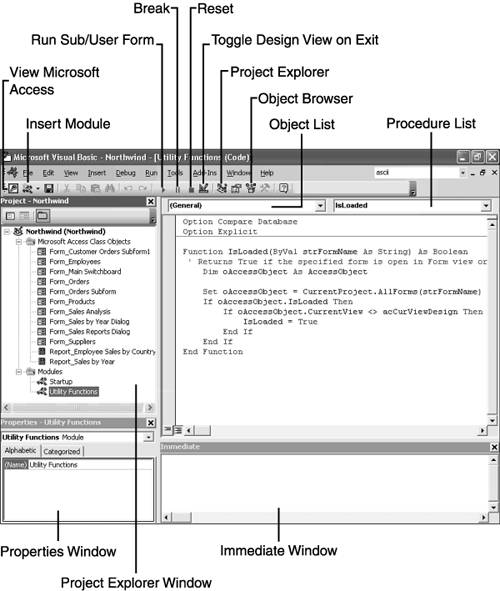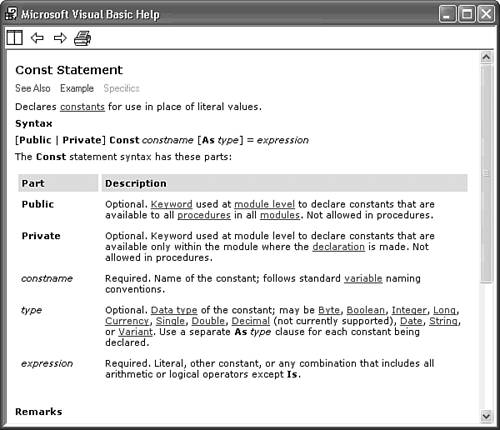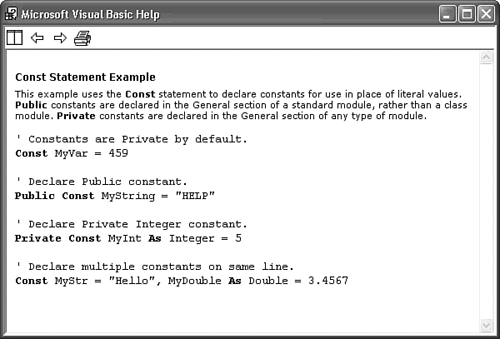Exploring the VBA Editor
|
Figure 27.8. The VBA editor window opens with the Project Explorer, Properties, and Immediate windows docked as shown here. The Toolbar of the Module WindowTable 27.3 lists the purpose of each item in the toolbar of the Module window (refer to Figure 27.8) and the menu commands and key combinations that you can substitute for toolbar components. Buttons marked with an asterisk (*) in the Item column were changed by Access 2000. There are no Access 2003 changes to the editor other than the appearance of active toolbar buttons, elimination of the Office Assistant barrier to obtaining online help for VBA, and the addition of the Ask a Question text box.
Module Shortcut KeysAdditional shortcut keys and key combinations listed in Table 27.4 can help you as you write and edit VBA code. Only the most commonly used shortcut keys are listed in Table 27.4.
You can change the default indentation of four characters per tab stop by choosing Tools, Options. Click the Editor tab and then enter the desired number of characters in the Tab Width text box. The VBA Help SystemMicrosoftprovides an extensive, multilevel Help system to help you learn and use VBA. The majority of the help topics for VBA are supplied by a generic VBA help file that's applicable to all flavors of VBA. If you place the cursor on a keyword or select a keyword and then press the F1 key, for example, a help window for the keyword appears (see Figure 27.9). If you click the "Example" hot spot under the name of the keyword, the window displays VBA sample code (see Figure 27.10). Figure 27.9. Placing the cursor on a keyword, such as Const, and pressing F1 opens the Microsoft Visual Basic Help window with the topic for the keyword. Figure 27.10. Clicking the Example link in the help window for a keyword opens a help window with VBA example code for the keyword. |
EAN: 2147483647
Pages: 417
- Enterprise Application Integration: New Solutions for a Solved Problem or a Challenging Research Field?
- The Effects of an Enterprise Resource Planning System (ERP) Implementation on Job Characteristics – A Study using the Hackman and Oldham Job Characteristics Model
- Context Management of ERP Processes in Virtual Communities
- Intrinsic and Contextual Data Quality: The Effect of Media and Personal Involvement
- Healthcare Information: From Administrative to Practice Databases
- Chapter I e-Search: A Conceptual Framework of Online Consumer Behavior
- Chapter II Information Search on the Internet: A Causal Model
- Chapter III Two Models of Online Patronage: Why Do Consumers Shop on the Internet?
- Chapter IV How Consumers Think About Interactive Aspects of Web Advertising
- Chapter VIII Personalization Systems and Their Deployment as Web Site Interface Design Decisions


